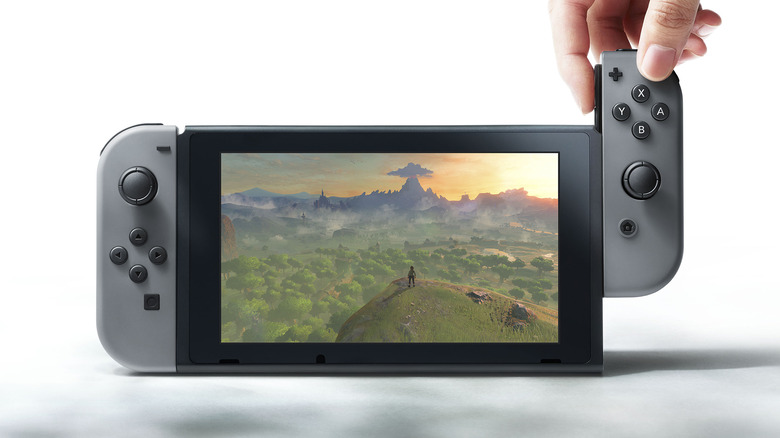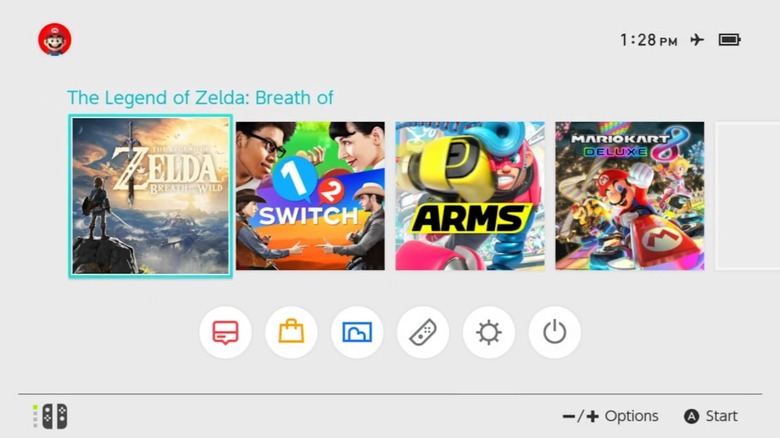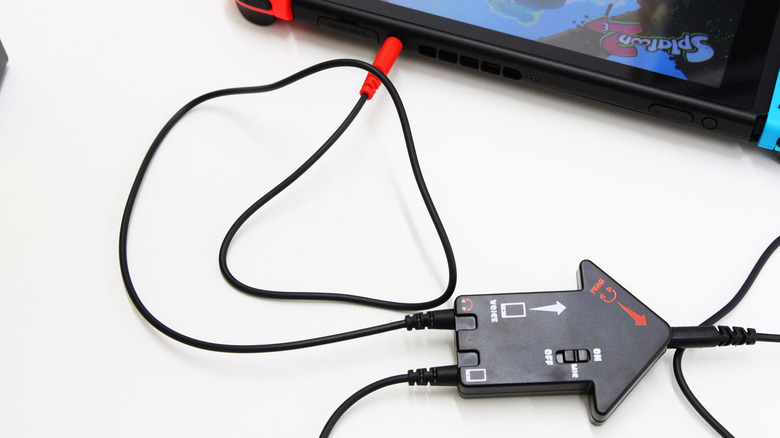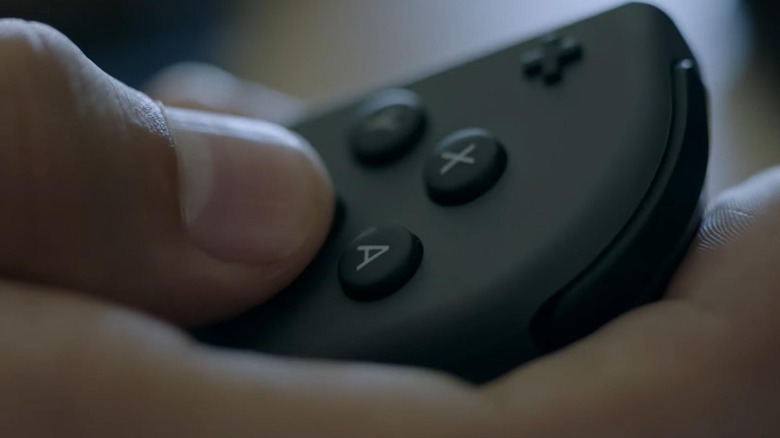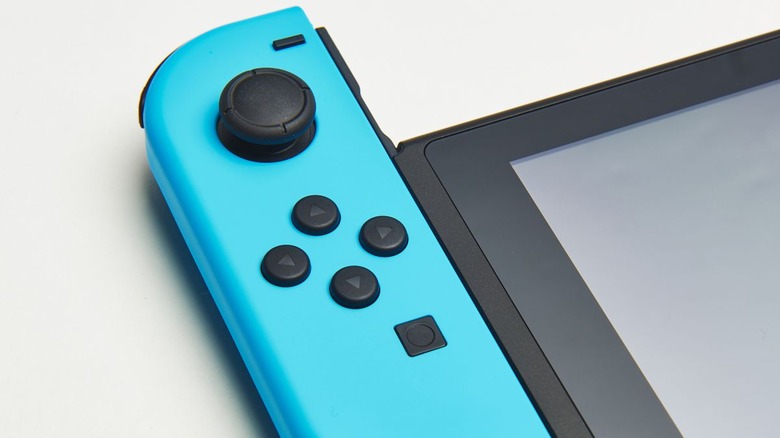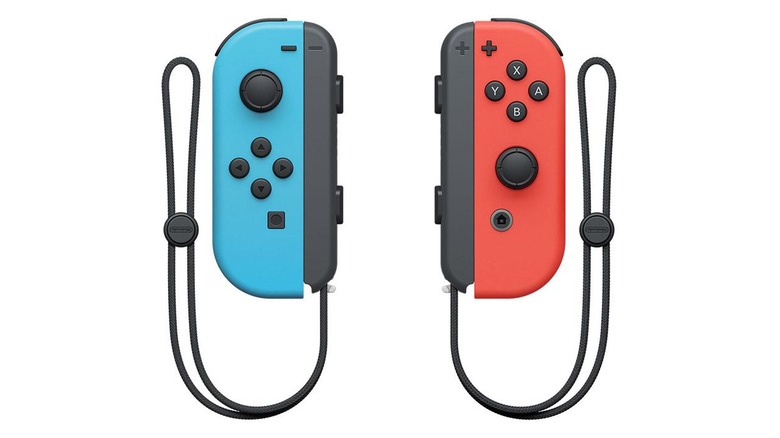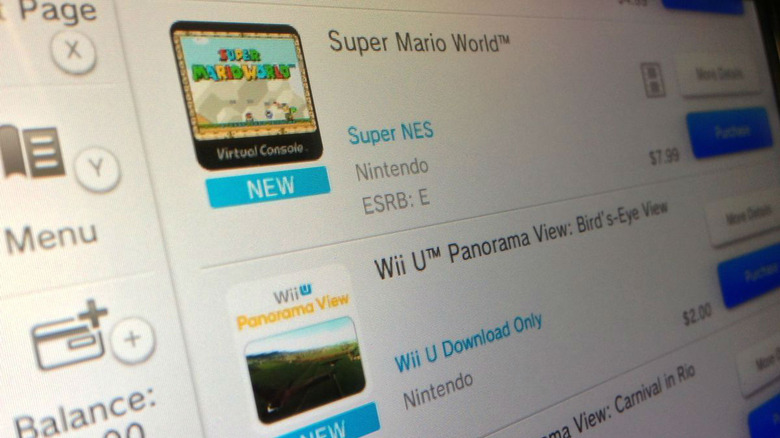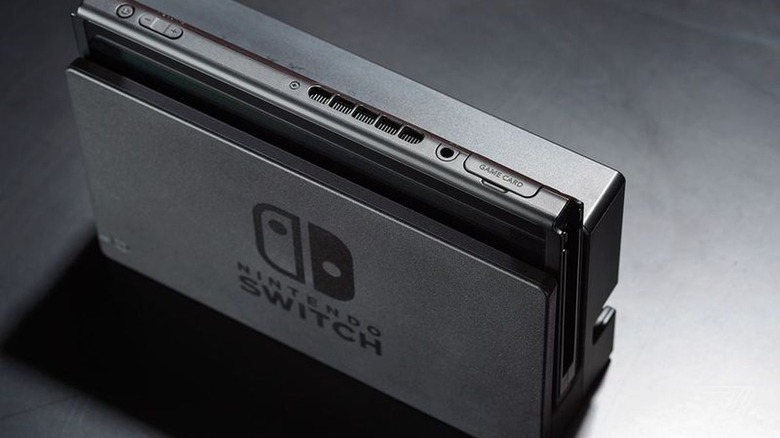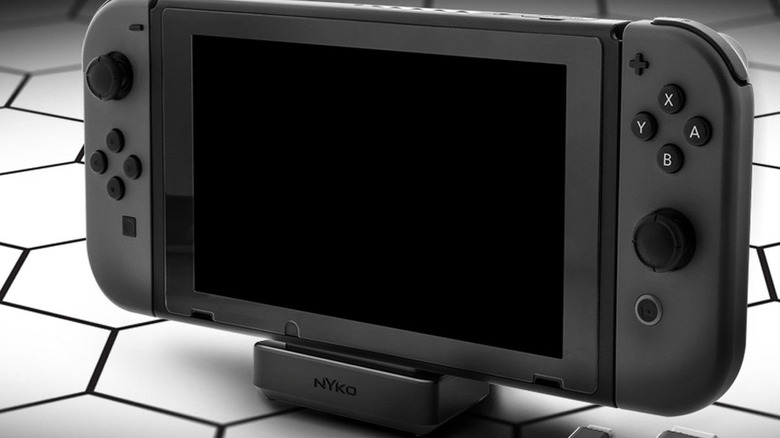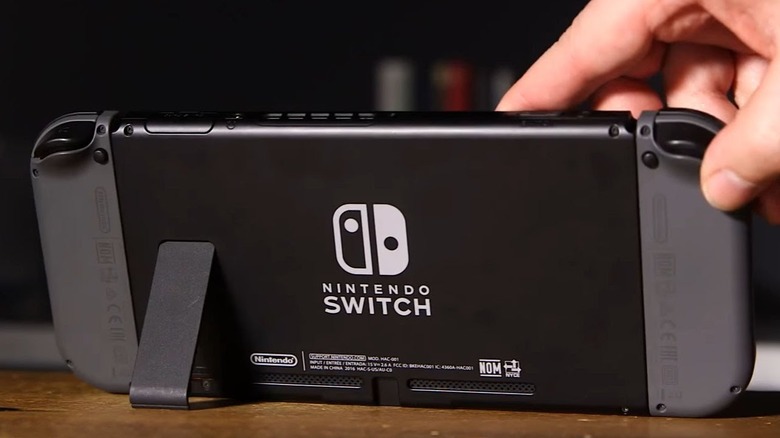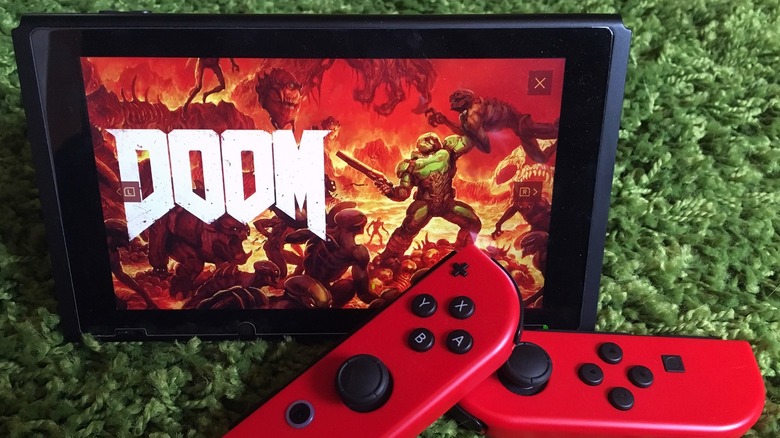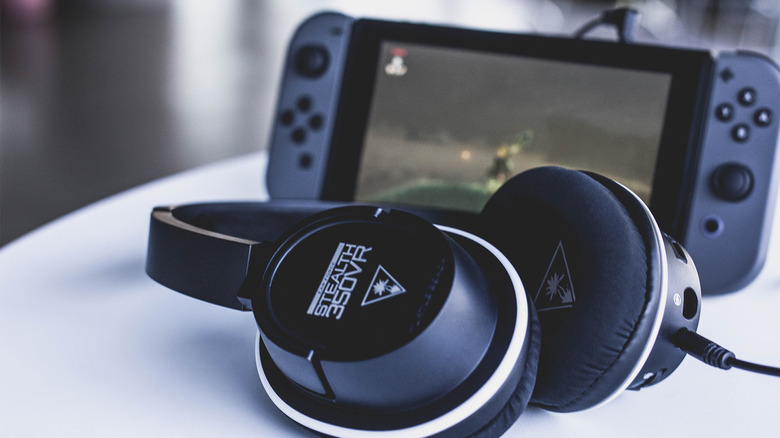Things About The Nintendo Switch That Still Annoy Us
Remember those mornings when you played Super Mario 64 before school? You probably thought, "Man, it would be great if I could take this with me." And then you got on the school bus, pulled out your bulky Game Boy, and fired up some monochrome Tetris. Times have certainly changed since then. But the divide between home console gaming and portable gaming was never so narrow until recently.
The Nintendo Switch finally managed to bridge that gap. And for the most part, it's awesome.
There's nothing like getting a few power moons in Super Mario Odyssey while you're waiting at the DMV. And lunch breaks are far more interesting when you can squeeze a few matches of Rocket League in. But for every enjoyable moment the Switch delivers, it seems there's a moment where we're either frustrated by its limitations, or disappointed by its design.
Or, put more plainly: there are a lot of things about the Nintendo Switch that annoy us. And now, dear reader, you're going to learn about them.
The operating system is bare-bones, at best
The Nintendo Switch operating system is pretty simple to navigate. And for someone who doesn't play a lot of games, that makes it the perfect console to own. You simply turn it on, choose your game, and go. No frills. Just some Mario Kart or Zelda in the blink of an eye.
If you're someone who plays a lot of games, though, the Switch is missing some key features.
To start, the home menu is highly inefficient. The games are shown in a horizontal list, regardless of how many you have installed. That's fine for five games. But twenty or fifty? Good luck. There are no folders. There are no sorting options. There's not even a way to search. Your only option is to scroll through every single game until you find the one you want.
On top of that, you have absolutely no control over your game save data. There's currently no way to back up saves, so if your Switch bites the dust, you're starting your games all over again. To be fair, game save backups will come when Nintendo's online service officially launches in September 2018. But that's a pay service. Nintendo is essentially holding your save data hostage unless you pay, and that's pretty unacceptable in this day and age.
The voice chat solution is nothing short of insane
The Nintendo Switch is a hybrid console, acting as both a home system and a portable. That presents some unique challenges, for sure, but one of them didn't have to be voice chat. Nintendo could have just built support into the system, like every other console has done, and called it a day.
But Nintendo didn't do that. Instead, the company came up with a solution that involves an adapter, two extra audio cords, and a phone app. And it's insane.
In order to use voice chat on your Nintendo Switch, you must first download the Nintendo app to your mobile device. From there, you'll plug your phone into a special adapter that also connects to your Switch and a headset. The adapter mixes the audio from both your Switch and your phone, creating a mess of cords that, frankly, shouldn't exist in 2018.
And that's just in portable mode! When docked, voice chat on the Switch becomes even more complicated unless you're sitting right next to it.
The solution is bad enough that Fortnite bypassed it entirely, adding native voice chat to the game. If Nintendo can't right this wrong, you'll probably see other games do the same.
There are no analog triggers to be found
When playing shooters and driving games, analog triggers are blessings. They let you lightly pepper shots off in titles like Destiny 2, and they help you ease off the gas when you're lining up a shot in Rocket League. Analog triggers are all about precision, which is why they've basically become a gamepad standard for whatever Xbox or PlayStation console happens to be out.
Which is why it's so baffling that you can't find analog triggers on the Nintendo Switch.
Now, this is nothing new for Nintendo. The company hasn't used analog triggers since the days of the GameCube. But even if these controller components weren't important to Nintendo in the mid 2000s and early 2010s, they definitely should be now. They're essential for shooting games, racing games, and just about any title with a pressure-sensitive gameplay aspect to it. And yet Nintendo has sat them out again, opting to go the digital trigger route.
It seems like a small miss, but those who rely on analog triggers will tell you: the Switch offers a lesser gaming experience because it doesn't have them. For a system that wants to encourage big-name publishers to come on board, that's not a good look.
The Switch uses buttons in place of a proper d-pad
Another concession Nintendo made with the Switch has to do with its Joy-Cons. These are the removable controllers found on the side of the Switch unit itself, and they enable a bunch of different gameplay experiences, including motion controls and shared-screen multiplayer.
Unfortunately, it seems Nintendo wanted the two Joy-Cons to mirror each other as closely as possible. That meant a traditional d-pad wasn't in the cards, since the right controller needed to have distinct buttons — and thus, the left one needed to do the same.
You may be wondering: is a d-pad even necessary? For those who play fighting or 2D platforming games, yes. It's why Nintendo opted for a d-pad on its Switch Pro Controller, and why its used a d-pad on every system its ever made. But the multiplayer aspect of the Switch took precedent with the Joy-Cons, and now gamers who simply want a good portable experience have to suffer with this diamond formation of buttons instead.
But not for long. Third-party accessory makers are hard at work on optional Joy-Cons that have d-pads, beating Nintendo to the punch. It'll cost you a bit extra, but once these Joy-Cons come out, you'll finally get the 2D controls you've been craving. With no thanks to Nintendo.
In shared-screen multiplayer, the right Joy-Con is much worse than the left
And speaking of shared-screen multiplayer on the Switch — have you tried it? The system has a pretty large display for a portable machine, but trying to play split-screen in Mario Kart 8 Deluxe can prove difficult on such a tiny screen. And that's not even the worst part about the Switch's multiplayer feature.
When oriented horizontally as gamepads, the Joy-Cons are not equal. One is definitely worse to use than the other, and you can probably guess which one just by looking at them. Hint: it's the one on the right.
To be fair, neither Joy-Con is the epitome of ergonomics when used alone. The joysticks and buttons are way too close together, and the Joy-Cons themselves are far too tiny to use comfortably. But the right Joy-Con takes the cake for its odd joystick placement, which forces you to reach across the pad in an awkward way.
If you play with friends, the right Joy-Con will quickly become the "loser" Joy-Con — as in, the winner gets to keep the good one. But really, you'd be better off finding a TV so you can avoid this experience altogether.
There is not, and may never be, a Virtual Console
When it first launched on the Wii back in 2006, Nintendo's Virtual Console was a revelation. It did away with ports, instead relying on emulation to let you play all your favorite Nintendo titles from past systems. Not only that, it also included games from the Sega Genesis, TurboGrafx-16, and more. The Virtual Console in its prime was a repository for retro console classics, and though the Wii U dropped the ball in terms of support for the VC, it was expected that Nintendo would eventually offer the service on its next system, the Nintendo Switch.
It didn't, and according to Nintendo, it's never going to happen.
What, pray tell, could be keeping Nintendo from adding this surefire money-maker to the Switch? No one knows for sure, but some speculate that the NES Classic and SNES Classic have something to do with it. Those two pieces of hardware have sold big for Nintendo, and the company might be afraid of cannibalizing its new revenue stream. There's also the issue of licensing, which Nintendo has had to do for each iteration of the VC. Perhaps the company doesn't feel its worth the trouble anymore, especially when it can offer fewer games on a retro-looking device and charge a higher fee.
Whatever the case, the omission of the Virtual Console on Nintendo Switch is a bummer.
The dock feels cheap, yet it's super expensive
The Nintendo Switch's dock might be one of the most disappointing things about the system. In product hero shots, it looks like a cool piece of kit that might house some impressive technology. But that couldn't be further from the truth. The reality is, the Switch's dock is a hollowed-out USB hub made of plastic — one that could blow over with a small gust of wind.
And for that reason, its price is absolutely ludicrous.
At press time, the Nintendo Switch dock sells for $89.99. That's darn near a third of the Switch's total cost, which means this thing is marked up quite a bit on its own. And perhaps you could swallow that cost if the Switch's dock was a quality product. But it's not. It's light, it feels cheap, and if you're not careful sliding your Switch in, it can potentially scratch or scuff the display. And there are air circulation issues, too. Some have discovered that their Switches are getting too hot and warping while in the dock, causing them to need a replacement. And you can't back up your saves, so getting a replacement basically wipes out all your progress in a game.
Hopefully Nintendo redesigns the dock for its next version of the system.
There are no third-party docks that are both safe and travel-friendly
You may be asking, "Why would you want another dock? Doesn't the Switch come with one?" Sure, it does. But your dock may break — after all, it's not the sturdiest thing in the world. Or you may travel a lot, and you want to avoid disconnecting your Switch dock every time you take it with you.
The good news is, there are third-party docks out there that promise to solve these problems for you. The bad news is, they could potentially kill your Nintendo Switch.
Why is this? Are there mistakes being made by every third-party peripheral maker, or by Nintendo? The signs point to an issue with the Nintendo Switch firmware, which can cause the Switch to become unusable if its planted into a non-Nintendo dock. It's a problem that Nintendo could fix, eventually, but one that seems to remain a danger at this time. And it means that — unless you're cool with getting a replacement Switch, and thus losing all your saves — you can only game safely using the standard Nintendo dock.
Which, again, costs a bonkers $89.99.
The kickstand is basically worthless
The Nintendo Switch's kickstand serves double duty. It acts as the kickstand, of course, allowing the system to stand independently while you use the Joy-Cons or the Joy-Con Grip. And it also plays the role of "SD card cover," keeping your digitally-stored games safe from the elements.
Sadly, it's a much better SD card cover than it is a kickstand.
There's no better word to describe the Switch kickstand than flimsy. It's made of thin plastic and built to snap open with almost no effort. And it fails at angling the system in a way that's helpful. With the Switch placed on a table, the kickstand provides a great viewing experience for those who have eyes in their chests. Otherwise, it's not even worth using.
If you're going to be using your Switch in tabletop mode, there are a whole bunch of phone stands, tablet stands, and Switch-specific stands out there that do a much better job. Use those and avoid the built-in kickstand. Your neck will thank you.
Games are almost always more expensive on the Switch
For those who primarily play multiplatform games at home, the Switch is already a tough sell. It can't stand up to either the Xbox One or PS4 in terms of graphics, and even if it could, its third-party library is lacking when compared to those more-established systems. Still, there are some who may salivate at the prospect of playing triple-A games on the move. Some who toy with the idea of getting a Switch for third-party games.
That is, until they see the game prices.
Video games are almost universally more expensive on Switch, thanks to its unique cartridge format and the fact that, well, it's the only hybrid console right now. So don't be shocked if you go to the store and see a $20 version of Doom (for Xbox One and PS4) next to a $50 version of Doom (for Switch). Yes, you can play at 4K and 60 frames-per-second on the more powerful systems. Yes, Doom runs at 600p and 30 frames-per-second on Switch. And yes, the Switch version is still, somehow, markedly more expensive.
It's something that might shake out over time. But for now, you can likely expect to pay more for a game on Switch than you would on any other system.
Using a headset while docked is a headache
We've already talked about the Nintendo Switch and its convoluted voice chat system. That system seems more tailored to the console's portable mode than it does for docked play, and unfortunately, that reality isn't just limited to voice chat. It also extends out to sound in general. The Nintendo Switch does not output audio via the Joy-Con Grip or a Switch Pro Controller. And it doesn't support Bluetooth. So those of you with headsets have a decision to make.
Do you want to run a really long wire from your Switch to your couch? Or would you rather just not use your headset?
It's astounding that Nintendo failed here, because its competitors solved this problem years ago. Both the Xbox One and PlayStation 4 have controllers with audio jacks. They funnel sound over the wireless signals that connect the controllers and the consoles, and this approach works incredibly well. The Switch loses points for not including this option.
But no Bluetooth support? For a home console that also acts as a portable, not adding Bluetooth audio just makes the Switch look like a backwards product. And it means you'll have to fiddle around far more to get things working than you do on other systems. For some, that's just way too much fiddling.

